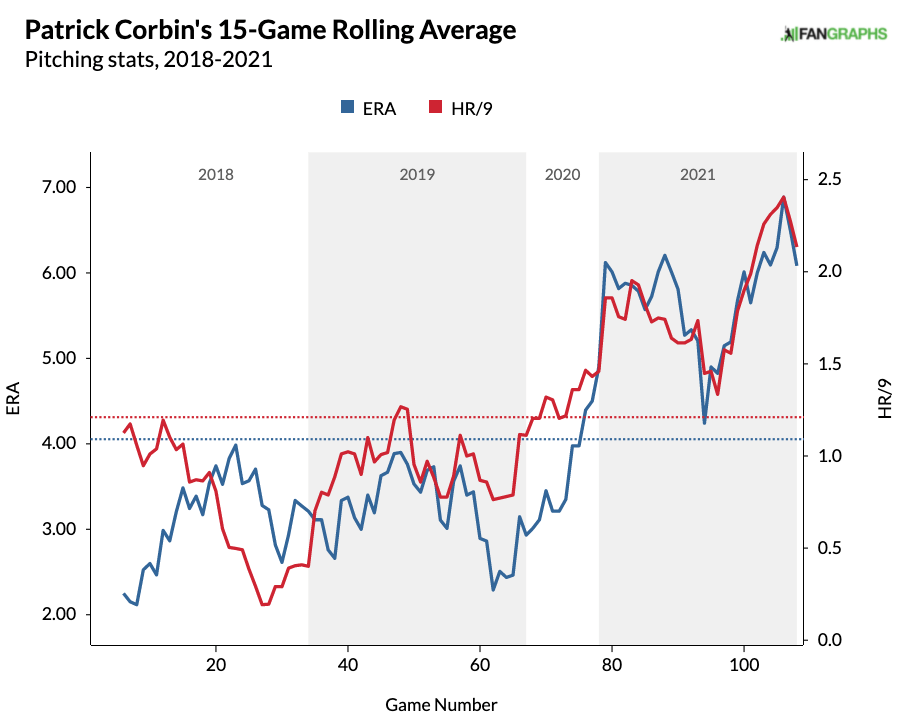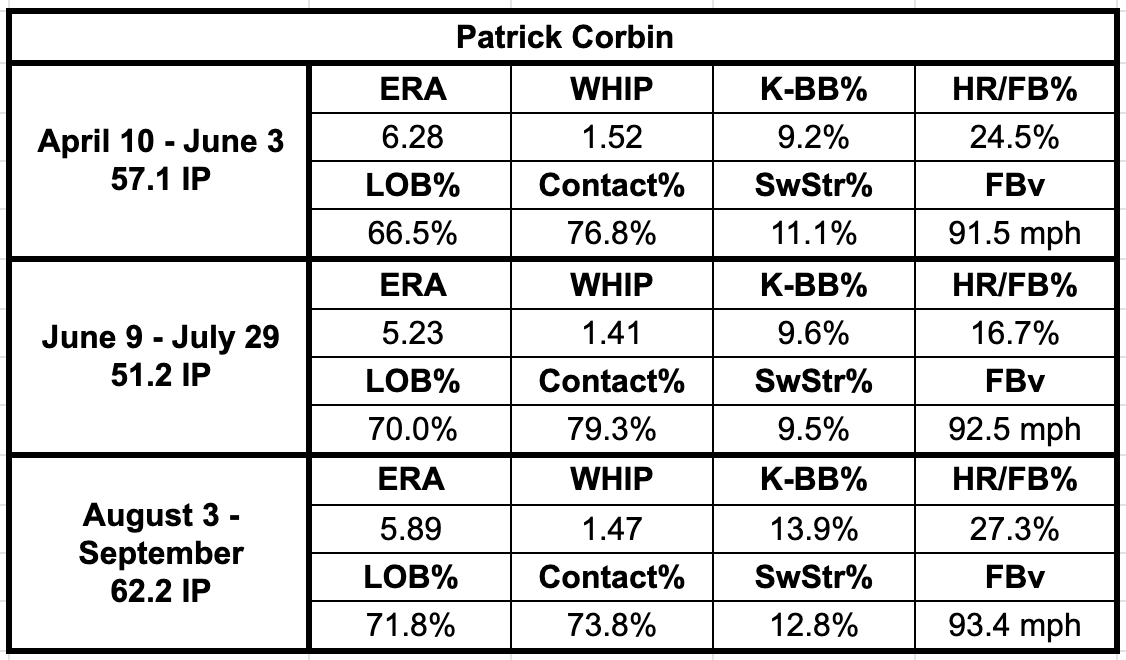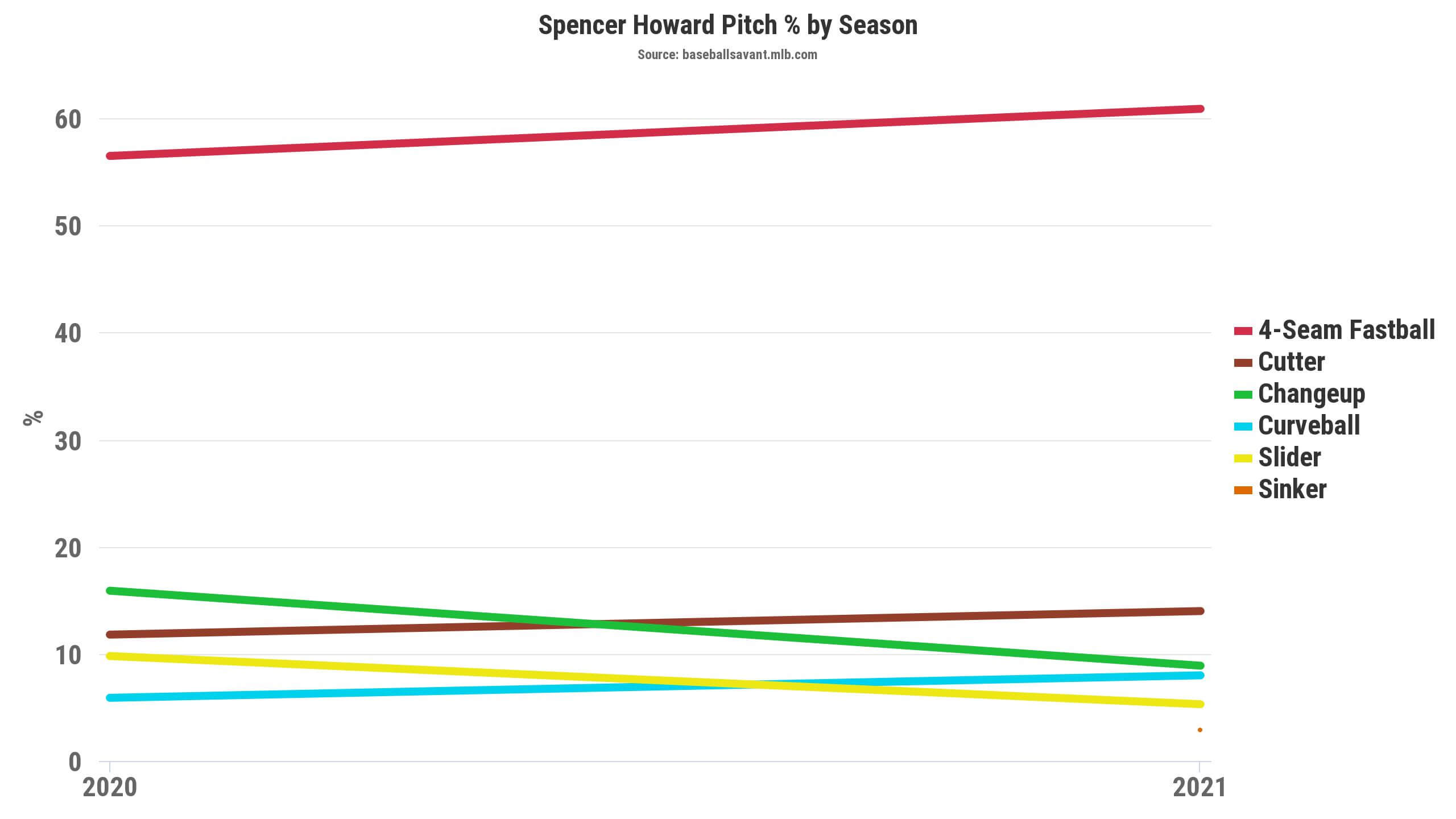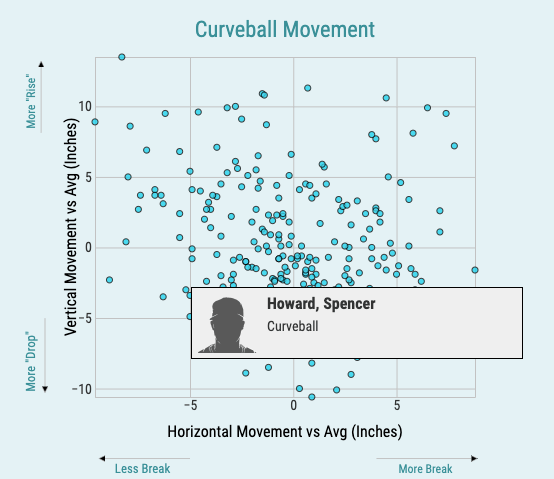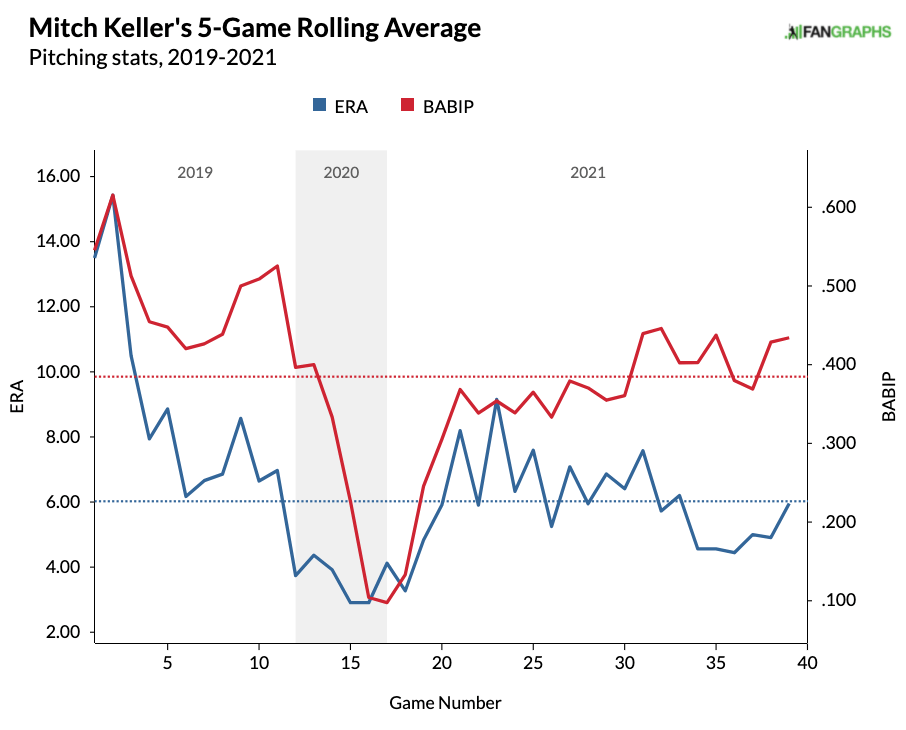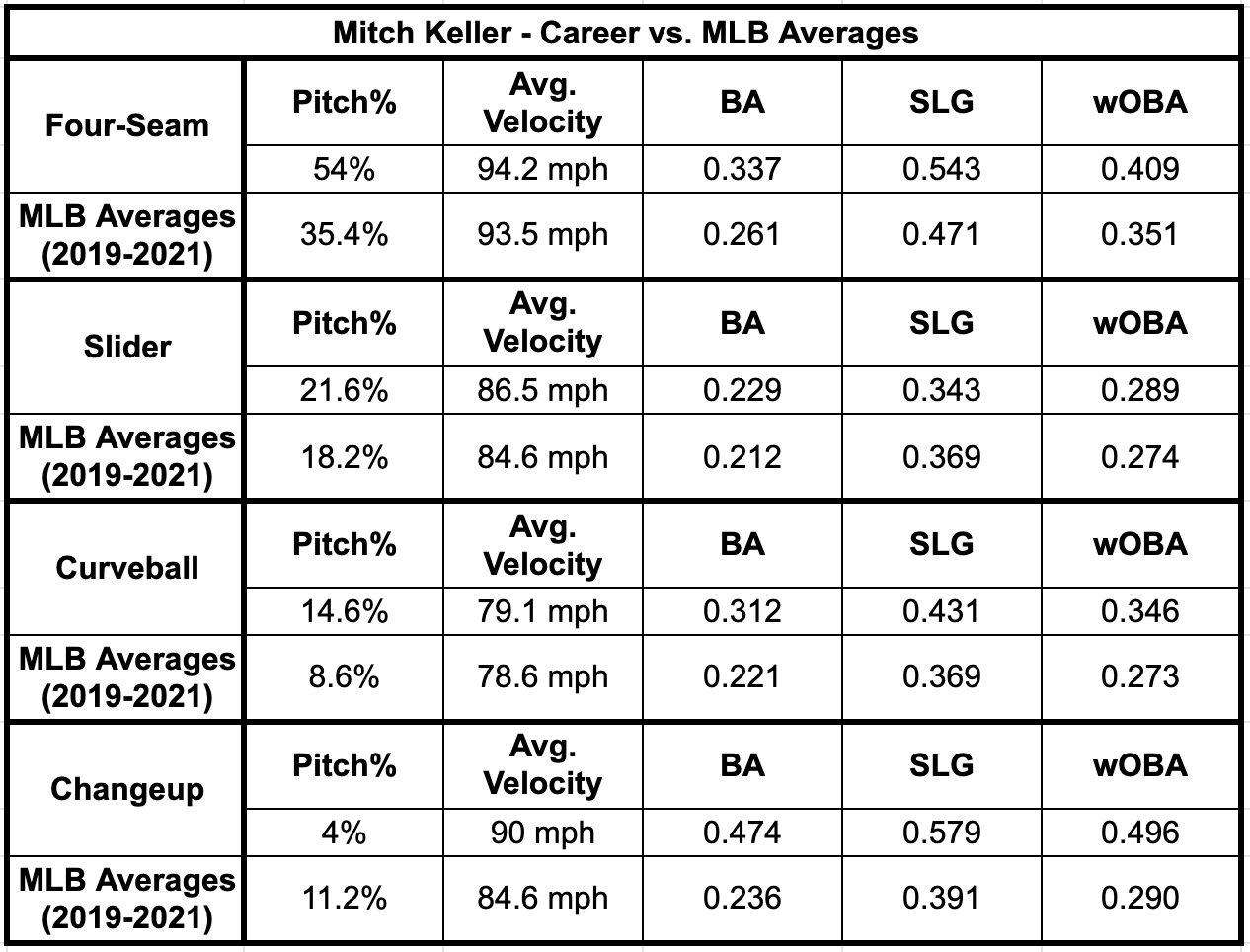Late-Round Starting Pitcher Sleepers
When first writing this, the start of the MLB season seemed unknown. Thankfully, the MLB season will start on April 7, which means let’s examine the NFBC ADP to find late-round starting pitcher options. To define late-round, we’re looking at starting pitchers around pick 400, which includes the last 4-5 round picks in 15-team leagues with 30 roster spots. With these late-round options, it’s a mixture of recent struggles, plus players not meeting expectations.
At this point in the draft, it’s a dart throw with risk, yet an ideal time to take those calculated risks. It’s a sharp ADP market, so these players go later in drafts for good reasons. However, we’ll do our best to examine several pitchers and undercover reasons for concern or optimism in 2022. Overall, it’s within the range of outcomes that these late-round starting pitchers provide streaming value with upside.
Quick Links
Patrick Corbin (SP – WSN)
Throughout 2020 and 2021, only two pitchers logged an ERA of 5.00 in the top-25 of innings pitched. Jordan Lyles ranked 18th in innings (237.2) with a 5.60 ERA and Patrick Corbin‘s 5.50 ERA with 237.1 innings (No. 19). On a positive note, Patrick Corbin threw a healthy chunk of innings over the past two seasons. However, the ratios stunk with a 5.50 ERA and 1.50 WHIP in 2020 and 2021 combined.
In 2021, Patrick Corbin’s .305 BABIP aligned with the career BABIP at .310. However, Corbin’s 69.4% LOB% should regress closer to the career rate of 73.2%, with the upside chance of 75.4% throughout the peak seasons in 2017-2019. Corbin’s home run boomed to a career-worst at 22.6% compared to a career rate of 14.8%. For context, the home run rate hadn’t reached that point since 2016 at 18.3%. The same happened with the HR/9 at 1.94 compared to a career rate of 1.16 – another career-worst for Corbin.
As a groundball-heavy pitcher with a 47.2% GB% in 2021, close to the career of 48.5%, Patrick Corbin’s home run should regress in 2022. That plus the strand rate improving will improve the ratios, but the question remains how much. With those positives, unfortunately, Corbin’s 19% strikeout rate gradually trended downwards from 30.8% in 2018, 28.5% in 2019, and 20.3% in 2020.
2021 Seasonal Splits
Let’s break down Patrick Corbin’s 2021 season that sadly peaked at a 4.24 ERA, yet a 6.89 ERA in mid-September. It’s arbitrary, but we’ll break down Corbin’s season into three parts with similar innings pitched totals. We notice a dip in HR/FB% in the middle of the season but an increased K-BB% to close the season.
One positive involves Corbin’s increased fastball velocity to close the season when the career rates hovered at 92.1-92.2 mph on the sinker and four-seamer. It’s also positive to see the lowered contact rate with the improved K-BB% from August and beyond.
Overall it’s a small sample when comparing Patrick Corbin’s 2021 season, and the career rates since 2021 account for 12.4% of his total innings pitched. Corbin’s slider remained an effective weapon for him with a 20.8% swinging-strike rate and 41.7% O-Swing% compared to career rates of 24.6% SwStr% and 43.4% O-Swing%. From a wOBA standpoint, Corbin’s slider performed the worst throughout the Statcast era at .284 compared to a .209 wOBA from 2012 to 2019.
Patrick Corbin’s 2022 Outlook
When a player performs awfully, the ADP market and fantasy managers notice. That said, Patrick Corbin’s sits right around pick 400 in early Draft Champions leagues. The projection systems look gross with STEAMER as the most optimistic from an ERA standpoint, evidenced by the 4.50 ERA, 1.36 WHIP, 21% strikeout rate, and 7.8% walk rate in 174 innings. Meanwhile, THE BAT expects a 5.23 ERA with ATC closer to STEAMER at a 4.60 ERA. As expected, the WHIP projects higher with THE BAT than ATC, but the overall innings projection remains similar. Patrick Corbin should eat up innings, and we should buy back in if we presume the slider results and home run rate regresses positively.
Reid Detmers (P – LAA)
As the No. 10 overall pick in the 2020 MLB Draft, Reid Detmers possesses a near plus-plus breaking pitch. In Detmers’ peak college season at Louisville, he logged 113 1/3 innings with a 2.78 ERA, 0.92 WHIP, 13.3 K/9, and 2.6 BB/9. Unfortunately, with the odd 2020 season, Detmers only pitched 22 innings at Louisville with quality ratios of a 1.23 ERA and 1.00 WHIP.
Then the Angels fast-tracked Detmers to Double-A and Triple-A in 2021 for 62 innings with a 3.19 ERA, 1.15 WHIP, 42% strikeout rate, and 7.4% walk rate. We love the 34.6% K-BB%, but the .356 BABIP and 81.4% LOB% in the minor leagues would likely regress over time. In the tiny MLB sample for Detmers of five starts, he threw 20 2/3 innings with a 7.40 ERA and 1.79 WHIP.
Not only did the ratios boom in the small sample, but the 18.8% strikeout rate and 10.9% walk rate looks gross. However, it’s safe to assume the 2.18 HR/9 should regress with more innings, plus the possibility of the same trend in BABIP (.328) and LOB% (68.8%).
Detmers’ Arsenal
Once again, let’s take the 2021 data with a grain of salt since we’re dealing with a small sample. Reid Detmers relied on the four-seamer 39.6% of the time, plus two breaking pitches in the curve (26.1%) and slider (24%). The curveball drops a whopping 65.2 inches with 2.8 versus the average. Amongst curveballs thrown 50 or more times, it ranks No. 14 in vertical drop, yet below-average compared to the league average. It’s a near 12-6 curveball around 11-5.
Reid Detmers, Beautiful 74mph Curveball. 🌈 pic.twitter.com/z6oxmqbE38
— Rob Friedman (@PitchingNinja) August 15, 2021
Both of Detmers’ breaking pitches elicited a double-digit swinging-strike rate with the curveball at 12.1% and slider at 17.6%. The slider may act more like a cutter given the velocity and break at times, but the vertical movement should allow the whiffs to continue. Detmers only threw 18 changeups, but it possessed a 16.7% swinging-strike rate and 46.2% O-Swing%, yet a .617 wOBA. Again, small sample, but it makes us wonder if Detmers could use the offspeed pitch to help against righties.
Detmers’ 2022 Value
In NFBC ADP, Reid Detmers goes a few picks after Patrick Corbin. However, the innings pitched projection remains the main difference. Since the Angels added Noah Syndergaard and Michael Lorenzen via free agency, it adds depth to the projected six-man rotation. However, it’s within the range of outcomes for Detmers to earn a spot over José Suarez and Jaime Barría with a larger sample.
Small sample, but both of Reid Detmers’ breaking pitches elicited a double-digit SwStr% w/ the curveball at 12.1% & slider at 17.6%.
The curve has that near 12-6 or 11-5 w/ 65.2 inches of drop w/ 2.8 vs the avg, similar to Max Fried. Rotation spot remains a❔#FantasyBaseball pic.twitter.com/7ZM5CS3YNe
— Corbin (@corbin_young21) February 21, 2022
The projection systems agree with the worrisome innings for Detmers in 2022. STEAMER, ATC, and THE BAT range from 90 to 106 innings and roughly 16-20 starts. Let’s use STEAMER’s 90 innings with a 4.32 ERA, 1.30 WHIP, 24.9% strikeout rate, and 8.9% walk rate. That’s a reasonable expectation for a second-year pitcher with some upside. However, it’s hard to draft Detmers in 12 or 15-team redraft leagues unless we receive news that he’ll start in the Angels rotation. In 15-team draft-and-hold type leagues, Detmers is worth a flier in the later rounds.
Spencer Howard (SP – TEX)
At one point, Spencer Howard garnered some dynasty and prospect buzz with the Phillies. In the small sample of 74 innings pitched, Howard has a 6.93 ERA, 1.62 WHIP, 21.9% strikeout rate, and 10.8% walk rate throughout his career. Across 235 innings in the minor leagues, Howard boasted a 3.10 ERA, 1.13 WHIP, 32.8% strikeout rate, and 8.7% walk rate. The 24.1% K-BB% looks solid during his minor league career.
Unfortunately, part of the struggles involves the missed time due to COVID-19, plus finger, back, shoulder, and knee injuries the past few seasons. Outside of injuries and poor performance in the small MLB sample, Spencer Howard noted he preferred to have a starting pitcher routine instead of a reliever. In 2021, Howard pitched as a reliever and starter, but the Phillies recalled and optioned him several times before the team traded him to Texas. Taking that narrative into account makes us wonder if some consistency in role and expectations would help Howard thrive, assuming health.
Howard’s Arsenal
Although it’s a small sample, Spencer Howard’s arsenal and results likely aren’t a fair description of what Howard can provide moving forward. Howard relies on the four-seamer a ton around 56-60% of the time, plus he sprinkles in a cutter and changeup that accounts for 22-27% combined. The scouting reports via FanGraphs note below-average command with the changeup as Howard’s best-graded pitch. However, the breaking pitches could perform like above-average pitches, particularly the curveball.
Howard’s breaking pitches, particularly the slider, possesses the best swinging-strike rate with a career of 20.5%. Meanwhile, the changeup boasts a career 11.7% swinging-strike rate. There’s a chance Baseball Savant lists Howard’s slider as a curveball given the results of a .081 wOBA against in 2021. Outside of that, Howard’s other pitches get crushed from a wOBA standpoint.
The pitch movement remains where the excitement should increase, especially the breaking pitches. Although the movement profile slightly changed, Howard’s curveball possesses an intriguing amount of vertical drop with 4.9 inches more than the average in 2021. That’s less than 2020, but the trend remains the same, which should translate to consistent whiffs on the breaking pitch.
In 2020, Spencer Howard’s four-seamer boasted slightly above average vertical and horizontal movement. However, the horizontal break reduced a bit in 2021. We’ll want to monitor the movement profile of Howard’s pitches in the four-seamer and breaking pitches in 2022. Even the cutter warrants intrigue with a near three mph increase from 2020 to 2021, but it possessed 2.7 inches more horizontal break in 2020. I wonder if the increased velocity in the small sample impacted the movement profile.
Howard’s 2022 Value
Whenever a former top prospect struggles, it’s a good idea to buy into the dip in ADP as a potential bounceback. That’s the case with Spencer Howard going right outside the top-500 picks in early Draft Champions leagues. Howard goes right near the next pitcher, who I’ve touted throughout the off-season as a potential breakout pitcher.
The projection systems don’t have friendly outlooks for Howard, but that’s unsurprising. ATC and THE BAT project Howard for an ERA of 4.96 to 4.98. Meanwhile, the innings projection doesn’t give us much confidence either – 99 innings for ATC and 106 innings for THE BAT. However, that aligns with the super late ADP, meaning he’s likely a waiver wire pitcher instead of a draft pick in 15-team rotisserie leagues. Going back to the narrative in the opening paragraphs, Howard seems like a driven pitcher with an exciting arsenal, especially if he adjusts the pitch mix to lower the four-seamer and increase the breaking and off-speed pitches.
Mitch Keller (SP – PIT)
Here’s the obligatory Mitch Keller mention as a late-round starting pitcher. In the middle of January, I tweeted about Keller then wrote up a deep dive later that month.
Mitch Keller’s career looks brutal with a 4.50 ERA, 1.41 WHIP, 21% K%, & 9.7% BB% in 170 1/3 innings pitched. However, it comes with a .385 BABIP and 67.8% LOB%.
In early research, it’s hard to glean reasons for optimism outside of regression & possible pitch mix change pic.twitter.com/oljmHK4imX
— Corbin (@corbin_young21) January 17, 2022
Let’s go through the reasons for concern. Mitch Keller holds a career of 6.02 ERA and 1.73 WHIP in 170 1/3 innings pitched. Keller’s 10.6% walk rate with a 22.1% strikeout rate doesn’t look great either. The career .385 BABIP and 67.8% LOB% added to the issues for Keller.
Now a few positives include regression in BABIP and LOB%. It’s still a relatively small sample for Mitch Keller, so there’s a good chance they regress, meaning the ratios improve. Although Keller gives up a high batting average on balls in play, the home run remains low, evidenced by the career 1.06 HR/9 and 11.2% HR/FB%. Hopefully, Keller keeps limiting the home runs in a pitcher-friendly park with the 5th-worst HR Park Factor according to EV Analytics at 0.84 – 14% below the league.
Keller’s Arsenal & Results
As noted in my tweet in January, it seems like Mitch Keller should adjust the pitch mix. Keller’s heavy reliance on the four-seamer around 55-59% over the past three seasons with .337 BA, .543 SLG, and .409 wOBA allowed in his career. On the flip side, Keller’s slider boasts a career swinging-strike rate of 17.6%, plus a quality .229 BA, .343 SLG, and .289 wOBA.
Although Mitch Keller’s curveball doesn’t have eye-popping numbers, it possesses above-average vertical drop and horizontal movement. In 2021, Keller’s curve boasted 4.4 inches more vertical drop with a 1.5 inches more break. That’s notable because vertical movement tends to help with whiffs, and horizontal movement aids with poor contact quality. We’ll also note that there’s a chance Baseball Savant and FanGraphs might label the slider and curveball differently.
Remote athlete and Pirates’ RHP @mkeller11 started working with Tread in late October.
✅Peak bullpen velo before this winter: 95 mph.
✅2021 average FB velo: 94 mph
✅Peak MLB velo ever: 98.3 mphHere he is throwing absolute missiles at Tread HQ, topping 100+ mph.🔥 pic.twitter.com/bmKKN7JRbc
— Tread Athletics (@TreadHQ) January 28, 2022
We know everyone loves a good hype video, and we recently received that with Mitch Keller working with Tread Athletics. Although it’s just a bullpen session, Keller’s fastball velocity increased in the recent videos. Before that, I bought into Keller as a bounceback pitcher in 2022 with a former top pitching prospect.
Keller’s 2022 Outlook
Mitch Keller’s ADP sits near Spencer Howard inside pick 500 in Draft Champions leagues. However, Howard’s ADP increased by about 50-100 spots after Keller’s hype videos came up in recent weeks. Before we touch on the projection systems, it’s worth drafting Keller in the later rounds with potential paths for growth.
ZiPS looks most optimistic with a 4.73 ERA and 1.52 WHIP in 134 innings pitched. However, ATC and THE BAT project 118 innings pitched for Mitch Keller. Unfortunately, Keller’s projected ERA via THE BAT is 5.17, with a 4.86 ERA for ATC. If we draft based on projections for pitchers, it looks like an easy fade. Overall, given the ADP, positive regression, and potential pitch mix changes, look for Keller as a late-round starting pitcher in 15-team leagues.

